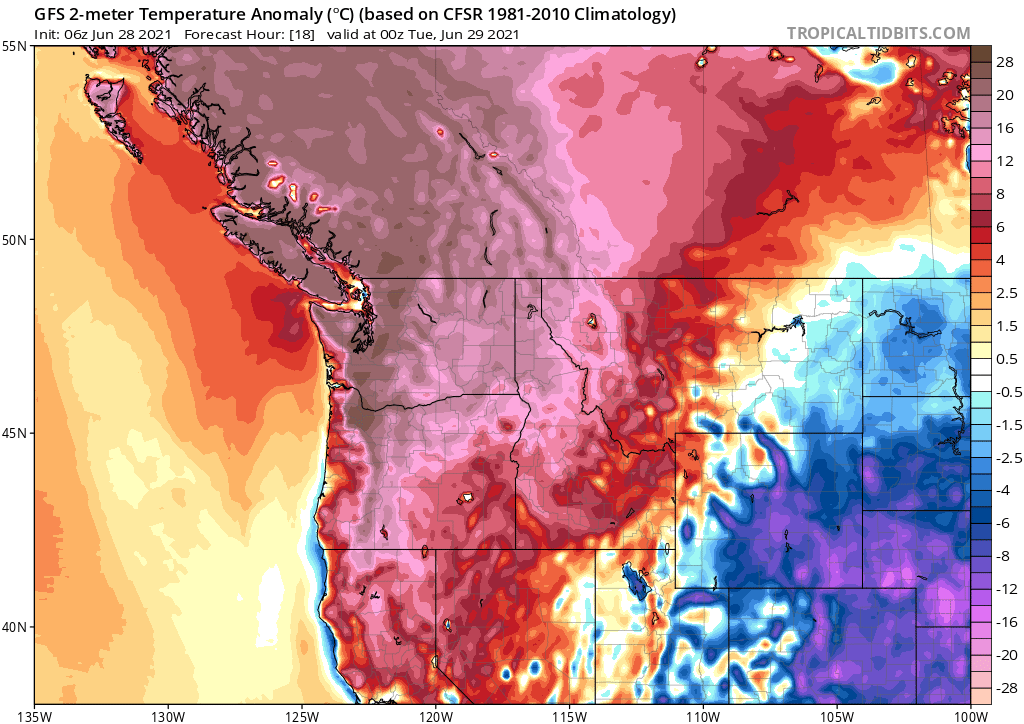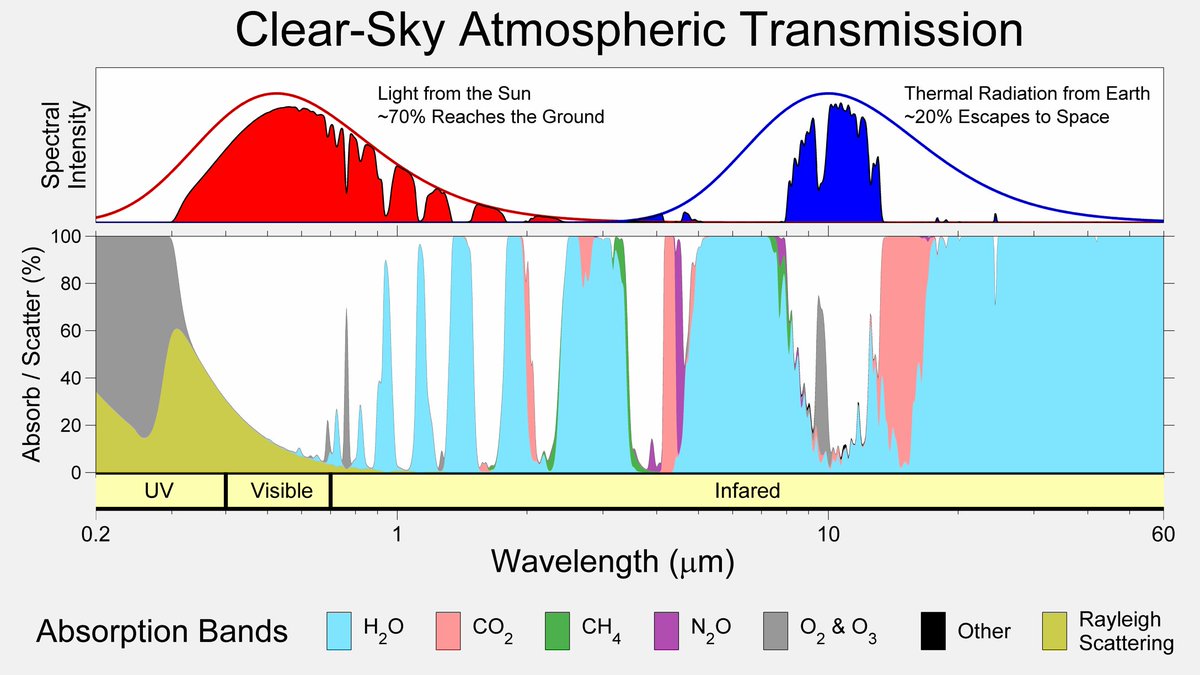
I've had a little time to digest the WWA report on the Northwest heatwave:
worldweatherattribution.org/wp-content/upl…
The most striking thing to me isn't the headline numbers, it's this graph.
Basically, it says the heatwave was statistically "impossible". Let me elaborate...
worldweatherattribution.org/wp-content/upl…
The most striking thing to me isn't the headline numbers, it's this graph.
Basically, it says the heatwave was statistically "impossible". Let me elaborate...

The graph, shown above, looks at temperature patterns observed in the Pacific Northwest over the last 70 years and applies what is known as Generalized Extreme Value (GEV) theory to it.
The fit, shown in red, looks pretty reasonable. 2/
The fit, shown in red, looks pretty reasonable. 2/
One of the features of GEV is that it sometimes predicts that a statistical system as a finite limit.
That occurs when the data presents a downward curving slope, as it does here. 3/
That occurs when the data presents a downward curving slope, as it does here. 3/
To be concrete, the analysis presented above says:
In the 70 years prior to 2021, the worst observed heatwave for the region corresponds to an average of ~35 °C (95 °F).
The GEV model estimates the worst possible is ~37 °C (99 °F).
But in 2021, we reached 39.5 °C (103 °F).
4/
In the 70 years prior to 2021, the worst observed heatwave for the region corresponds to an average of ~35 °C (95 °F).
The GEV model estimates the worst possible is ~37 °C (99 °F).
But in 2021, we reached 39.5 °C (103 °F).
4/
The GEV model said that 39.5 °C was "impossible", but it happened anyway.
Now obviously, if it happened then it was actually possible, so what is it really telling us?
5/
Now obviously, if it happened then it was actually possible, so what is it really telling us?
5/
It suggests that the 2021 heatwave may have had a qualitatively different origin or dynamics than all the other Pacific Northwest heatwaves of the last 70 years.
6/
6/
That kind of thing happens sometimes with extremes in physical systems.
For example, 70 years of normal rain data may badly fail to predict how much rain is possible during a hurricane, because a hurricane is dynamically different from normal rain-producing processes.
7/
For example, 70 years of normal rain data may badly fail to predict how much rain is possible during a hurricane, because a hurricane is dynamically different from normal rain-producing processes.
7/
The statistics suggest that the Pacific Northwest heat storm was not merely more extreme than past events, but perhaps also qualitatively different.
So, *if* the event was qualitatively different from past events, then we ask in what way?
8/
So, *if* the event was qualitatively different from past events, then we ask in what way?
8/
The first option is that the heat storm was a proverbial hurricane, e.g. a rare dynamical interaction that has always been possible, but so rare that in 70 years of data we never observed a weather pattern that was qualitatively similar.
9/
9/
The second option is that we are seeing unfamiliar dynamics because the climate system has changed at large scales in ways we don't yet fully understand.
I consider this the scarier option.
10/
I consider this the scarier option.
10/
Right now, we don't know the answer.
In all likelihood, entire PhDs will be written about the Pacific Northwest heat storm.
But nature has thrown us a scary curve ball, and we'll have to wait and see if this was just an exceedingly rare one-off or a sign of more to come.
11/11
In all likelihood, entire PhDs will be written about the Pacific Northwest heat storm.
But nature has thrown us a scary curve ball, and we'll have to wait and see if this was just an exceedingly rare one-off or a sign of more to come.
11/11
• • •
Missing some Tweet in this thread? You can try to
force a refresh















